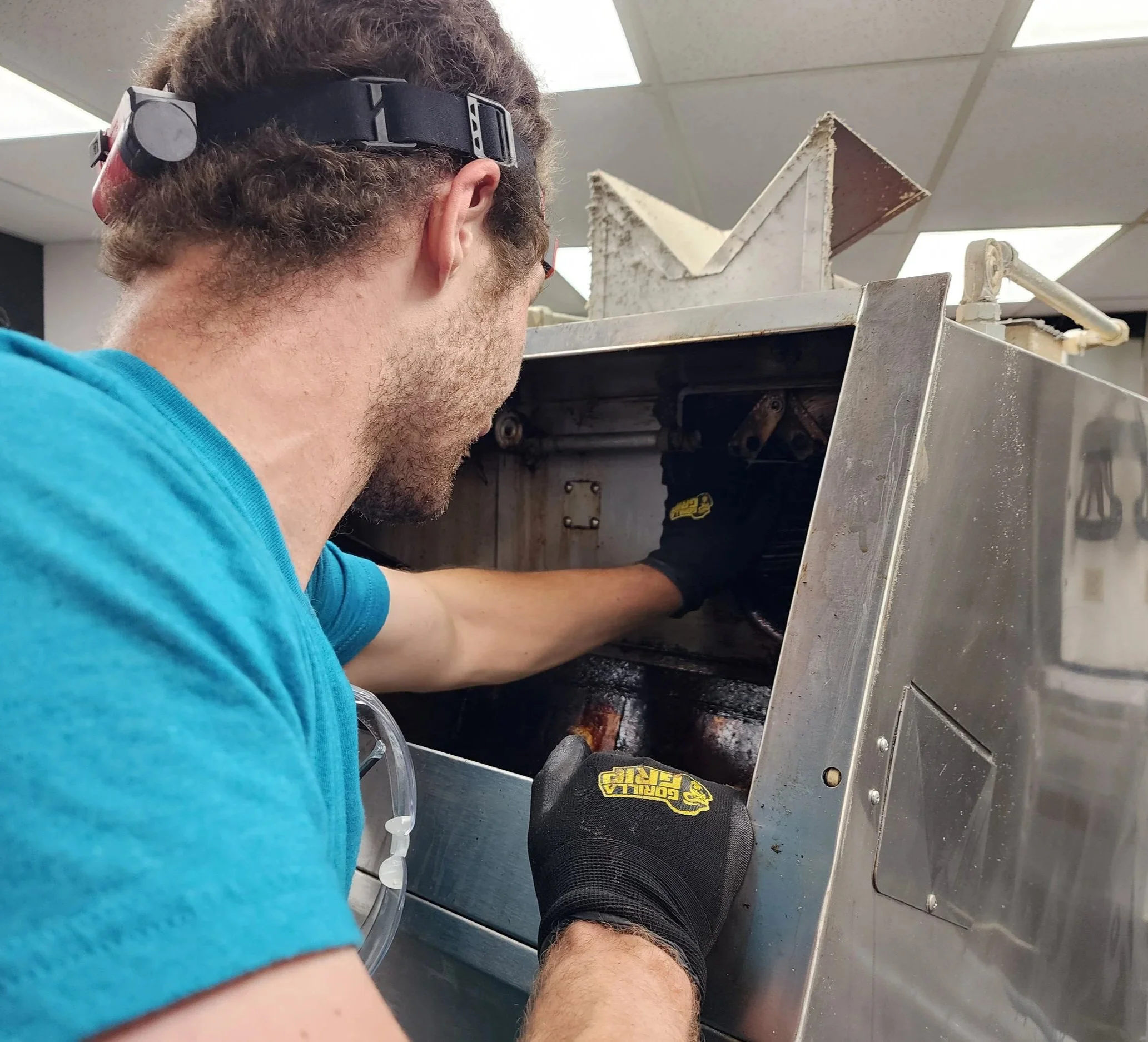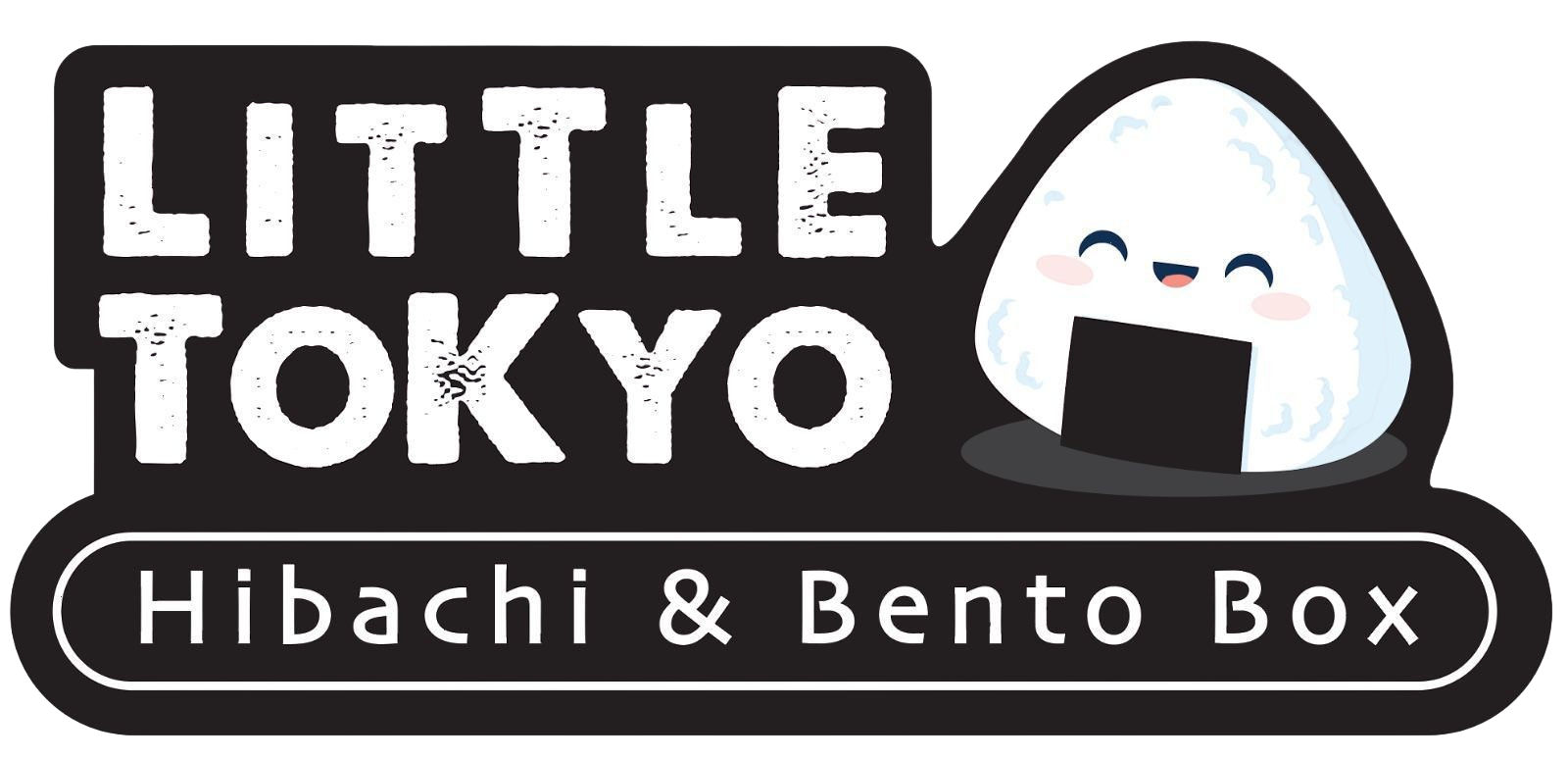
Commercial Kitchen Appliance Cleaning & Inspection
Cooking Appliance Cleaning Importance & Frequency
Overall Importance of Kitchen Cooking Appliance Cleaning:
Regular cleaning of commercial cooking appliances—such as ranges, grills, fryers, ovens, and griddles—is essential for safety, performance, and regulatory compliance. Built-up grease, food residue, and carbon deposits not only impact appliance efficiency but also pose serious fire risks. The top 3 reasons to clean are:
Fire Prevention: Grease and food buildup on or around cooking appliances can ignite easily. Routine cleaning significantly reduces the risk of equipment-related fires.
Performance & Air Quality: Clean appliances operate more efficiently, heat more evenly, and contribute to a more comfortable kitchen environment by reducing smoke and odors.
Compliance: Routine maintenance helps meet local fire safety and health code requirements, avoiding citations, fines, or business interruptions.
Required Frequency of Cooking Appliance Inspection:
Cleaning frequency for commercial cooking appliances should align with the principles set forth in the National Fire Protection Code 96 (NFPA 96), which emphasizes the reduction of fire hazards associated with grease-laden vapors and residues. While NFPA 96 directly addresses exhaust systems, the same risk-based approach applies to cooking equipment due to its role in generating combustible residues.
Commercial cooking appliances are subject to annual inspection by a certified individual.
Per NFPA 96 Section 11.6.1, cleaning schedules should also be adjusted based on inspection findings and documented grease accumulation. Equipment should always be maintained to prevent the collection of combustible residues!
National, State, & Local Regulations
National Fire Protection Association (NFPA) 96:
NFPA 96 is the primary standard governing the installation, inspection, and maintenance of commercial kitchen cooking appliances and exhaust ventilation systems. This standard serves as the foundational guideline for ensuring that commercial kitchen cooking appliances and exhaust ventilation systems are designed, installed, and maintained in a way that minimizes the risk of fire, protects property, and ensures the safety of both staff and customers. Systems must comply with NFPA standards and undergo regular inspection and maintenance.
NFPA 96 requires annual inspection of commercial cooking appliances, with the frequency of cleaning depending on the type and volume of cooking. For example:
Systems Serving High-Volume Cooking Operations
(e.g., 24-hour restaurants, hotel kitchens, fast food chains)
➤ Daily surface cleaning of all cooking appliances, with deep cleaning at least weekly. More frequent cleaning may be required based on equipment type and grease accumulation.Systems Serving Moderate-Volume Cooking Operations
(e.g., sit-down cafes, mid-size caterers)
➤ Daily surface cleaning, with deep cleaning at least monthly to remove built-up grease and carbon deposits.Systems Serving Low-Volume or Intermittent-Use Cooking Operations
(e.g., seasonal kitchens, community centers, churches)
➤ Cleaning after each use or daily, with deep cleaning quarterly or semi-annually, depending on actual use and inspection findings.
The standard mandates that inspection and cleaning must be performed by trained, qualified personnel.
Occupational Safety and Health Administration (OSHA):
OSHA sets guidelines for ensuring a safe working environment, which includes the cleanliness of commercial cooking equipment. Employers, including companies like Deftwerk Solutions, must ensure that cleaning personnel follow OSHA safety protocols, such as using personal protective equipment (PPE) and proper chemicals.
State and Local Fire Codes:
State and local jurisdictions may have additional fire codes that supplement or expand upon NFPA 96 requirements. Local jurisdictions within Washington may have additional requirements or stricter regulations.
These codes can dictate specific cleaning frequencies, inspection requirements, and reporting protocols.
2021 Washington State Fire Code (which is based on the International Fire Code) has specific requirements for commercial cooking operations, including the installation of automatic fire sprinkler systems in certain circumstances, like protecting exhaust hood and duct systems when necessary.
Health Department Regulations:
Health departments at the state or local level often require that commercial kitchens maintain clean and sanitary conditions, including the commercial cooking appliances in their entirety.
Inspections may be conducted to ensure compliance, and failure to comply can result in hefty fines or closure.
Environmental Protection Agency (EPA):
The EPA regulates the disposal of grease and other waste products generated during the cleaning process.
Grease and chemicals must be disposed of in accordance with environmental regulations to prevent contamination of water sources. Our proprietary, biodegradable degreasers exceed designated requirements.
Scheduled compliance with these regulations not only minimizes fire risks, but also ensures the kitchen operates efficiently and remains in good standing with health and safety authorities!
Pre-Inspection & Cleaning Preparation
Regular cleaning and maintenance of commercial cooking equipment are essential to fire safety, performance efficiency, and code compliance. In accordance with NFPA 96: Standard for Ventilation Control and Fire Protection of Commercial Cooking Operations, all cooking appliances that produce grease-laden vapors must be annually inspected and regularly cleaned as part of an integrated fire prevention strategy.
Initial Equipment Inspection:
Prior to cleaning, one of our certified MFS NFPA 96-accredited Private Inspectors conducts a comprehensive evaluation of the cooking appliances and associated areas. This includes checking for grease accumulation, equipment damage, or other fire risk indicators on and around:
Ranges, griddles, fryers, ovens, and broilers
Equipment connection points to the hood and duct systems
Areas prone to hidden grease buildup (e.g., seams, drip trays, flue spaces)
Detailed reports are generated, including service findings, system condition summaries, and photographic documentation, to verify inspection outcomes and cleaning needs.
Preparation For Cleaning:
To ensure a safe and compliant cleaning process:
All surrounding kitchen equipment and surfaces are protected using fire-rated welding blankets or chemical-resistant plastic sheeting to prevent contamination from grease, debris, and cleaning agents.
Appliances are powered down and cooled to safe temperatures prior to deep cleaning.
Floor areas are covered or blocked off to minimize slip hazards during cleaning.
This preparation process helps protect equipment integrity and ensures that cleaning activities meet NFPA 96 Section 11.4 requirements for cleanliness and fire safety during maintenance procedures.
Commercial Cooking Appliance Cleaning Procedures
Cleaning Cooking Equipment Surfaces (Interior & Exterior):
Commercial cooking equipment such as ranges, griddles, fryers, ovens, and broilers accumulates grease and food debris during normal operation. These residues must be regularly removed to prevent ignition and performance issues.
Apply a food-safe degreasing agent to the exterior and interior surfaces of each appliance.
Manually scrape or brush off heavy grease and carbon deposits from cooktops, burner trays, flattops, and side panels.
Use hot water rinsing or steam cleaning where appropriate to lift and remove embedded grime.
Dry all surfaces thoroughly to prevent corrosion or reaccumulation of debris.
🔧 All equipment should be turned off and cooled prior to cleaning. Follow manufacturer-specific cleaning procedures where applicable.
Cleaning Removable Components:
Many commercial appliances have parts that trap grease and should be removed for deep cleaning.
Remove and soak components such as grease trays, drip pans, burners, oven racks, and grates in a degreasing solution.
Scrub thoroughly to remove built-up grease and food residue.
Rinse and completely dry all parts before reinstalling them into the equipment.
⚠ Pay special attention to parts near open flames or heating elements, as grease buildup in these areas poses a higher fire risk!
Post-Inspection & Certification
Final Inspection and Certification Process:
Following the cleaning of commercial cooking appliances, a final inspection is performed to verify that all grease, carbon buildup, and food residue have been thoroughly removed from the equipment’s surfaces, components, and surrounding areas. This step ensures that the equipment meets the cleanliness expectations outlined in NFPA 96 for grease-producing cooking operations.
Conduct a visual inspection of each appliance to confirm that all surfaces, burners, trays, and removable components are free of grease and contaminants.
Verify that equipment is properly reassembled and returned to safe, operational condition in accordance with manufacturer and code guidelines.
Document the cleaning process with before-and-after photos to provide visual proof of service quality and to support compliance tracking.
Visual Inspection & Reassembly:
Inspect appliances for any signs of damage, wear, or grease that may have been missed during cleaning.
Confirm all safety mechanisms (pilot lights, gas valves, igniters) are functioning correctly.
Reassemble and test equipment to ensure safe operation.
📋 Document cleaning dates and inspection results to support ongoing compliance with NFPA 96 maintenance best practices.
Service Documentation:
A Job Service Report (JSR) is completed detailing the appliances serviced, cleaning procedures performed, and any notable inspection findings.
While Certificates of Performance typically apply to hood and duct systems, the JSR serves as a formal record that cooking equipment cleaning has been performed in accordance with NFPA 96 maintenance expectations.
Documentation can be provided to insurance providers, fire marshals, or health inspectors as proof of fire risk mitigation and proper equipment maintenance.
📎 Maintaining accurate service records is a recommended best practice under NFPA 96 Section 11.6.13, supporting ongoing compliance and accountability in commercial cooking environments.
Digital Records & Client Portal Access:
To ensure clients have immediate and ongoing access to vital service documentation:
Invoices are issued at job completion with options for secure online payment.
All Job Service Reports, Certificates of Performance, and related photos are stored for a minimum of 5 years, as recommended by best practices for record retention.
Clients receive 24/7 access via the Deftwerk Solutions Client Portal to:
View and download certification documents
Access service history
Manage upcoming appointments
Process payments securely
Contact us for a FREE digital inspection & estimate!
Proudly Serving Businesses Like Yours










